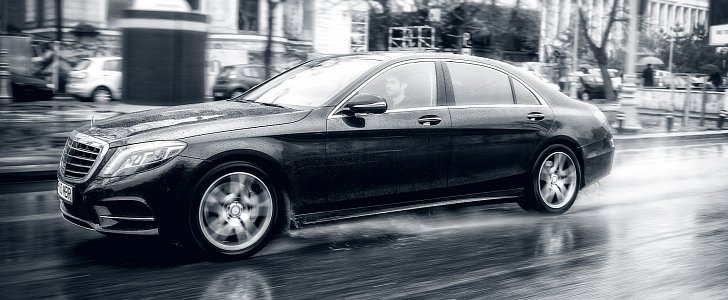When it comes to the basics of driving, one of the first drive safety challenges to arise from… well, the list of drive safety challenges, is driving through the rain. Since I've never been there, I'm not sure if “the rain in Spain stays mainly in the plain” or not, but in the rest of the populated world it certainly isn't so picky.
Let's Get Wet: A Simple Guide for Driving in the Rain

On a perfect rainy day, you would normally find yourself at home either petting the dog/cat/python in an armchair by the fire, trying to conceive a baby, or hanging out at the local pub with the excuse of waiting for the rain to stop.
Since those perfect rainy days aren't happening very often unless you live in the U.K., we've made up a few rules for driving in the rain and how this type of precipitation can influence your car's behavior for the worse.
Surprisingly for some, it seems that much more accidents happen during unexpected rain than during snowfall, so that should be enough of a reason to be more careful before driving through rain.Preparing for the journey ahead
Before embarking on a driving trip during rainy conditions you should always double-check your car's condition. The brakes, tires pressure, and tread depth should be in tip-top shape. Although more than one tire manufacturer designs tires specifically for wet roads, a set of all-season or summer tires should be just fine for the job at hand. Your windshield wipers should work correctly and you should obviously replace any blade that is brittle or damaged.Hydroplaning or aquaplaning: fun but dangerous
Happening mostly because the speed of your car is uncorrelated to the driving conditions, Hydroplaning or aquaplaning is awful news. If your tires don't have enough tread depth or you go through deeper water at higher speeds you risk losing control of your car.
In simple words, hydroplaning means no control. None, whatsoever. When that happens you are no longer the driver but just a passenger in the car. To avoid skidding, you should be driving at much lower speeds than usual, but also avoid using the brakes whenever possible, especially on cars without ABS. The tires, of course, should be properly inflated and have a good amount of tread life on them.
If the car does begin to hydroplane, keep your calm and DO NOT brake or turn suddenly, because this will only make the car skid. You should just gently ease off the gas pedal until the car slows down enough to be controllable. If you do have to brake, do it very gently, since any disturbance in the masses acting on each wheel might transform you from the driver into the passenger we were talking about earlier.Keeping your distance is something that needs to be enforced
You do, of course, know that rain also reduces the driver's perception, besides transforming the roads into a duck's forbidden playground. Since the visibility is reduced during rain, the usual distance you keep from the car in front should be far greater. Drive at a slower pace than usual because the traffic is likely to be moving more slowly as well, and the drivers' reaction times are profoundly decreased during rain.
Every time you realize that you have to brake or slow down, do it earlier than usual but much more gently. This can give the driver behind you more travel time and more space for maneuvering if something comes up in the front. Also, use your lights and signals much more meticulously than before, even if it’s daytime. Visibility is crucial in a time when braking distances and reaction times are much longer than usual.
A good rule of thumb is to use the 3-second rule or even transform it into a 4- or 5-second rule, depending on how bad visibility is and how much water is on the road.Unlike the definition used in basketball, the 3+ second rule is to check a fixed point when the car in front of you is passing it by. After that, you simply start counting (1 Mississippi, 2 Mississippi, 3 Mississippi) to see how much time passes before you reach the same fixed point.
Don't worry if it feels like you're leaving too much space between your car and the one in front, the more, the merrier if something unexpected happens. Remember that braking distances are significantly increased on wet roads and this is about your own and your passengers' safety after all, not about pleasing the angry tailgater behind you.Avoiding water is easier than it sounds
Of course, driving in the rain and avoiding water sound like two different actions that exclude each other, but it isn't always the case. Whenever you see a large puddle up ahead, try to go around it or even choose a different road. There are several reasons for not trying to imitate that SUV commercial you saw earlier (ed, smashing the acceleration whenever the driver sees a puddle).
First of all, you never know what's behind (actually, under) puddle number one, or two, three… and so on. A huge pothole could be hiding under there, and these are probably the main reason for damaged rims or misaligned wheels.
Also, the splash from the water could (possibly, though, not probably with modern cars) enter your engine compartment and damage the electrical system. Whenever you do go over a puddle, always gently tap the braking pedal to dry off the accumulated water on your brake rotors.
A good idea is also to stay in the middle lane whenever possible since water tends to pool in the outside lane and that's where the fun but deadly hydroplaning happens. If there is more than one vehicle in front of you, try and drive on the same tracks that they're leaving behind, but keep in mind the 3+ second rule once you start doing that.








